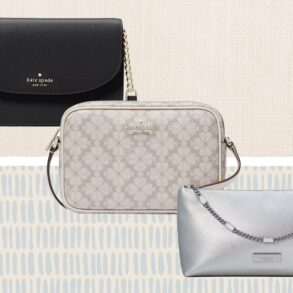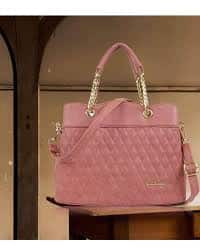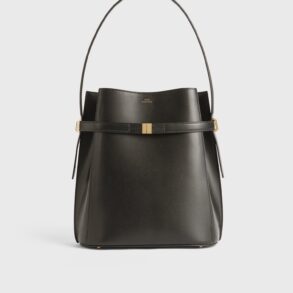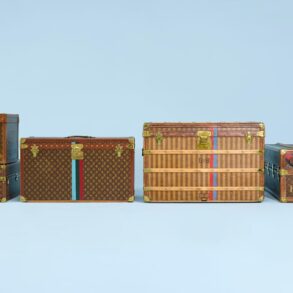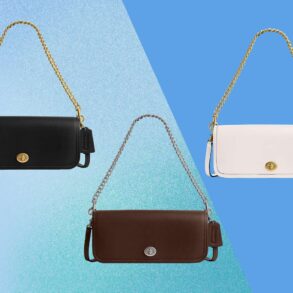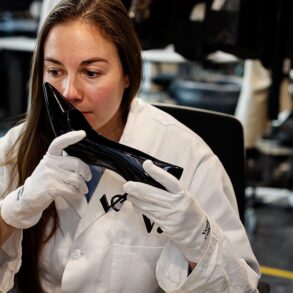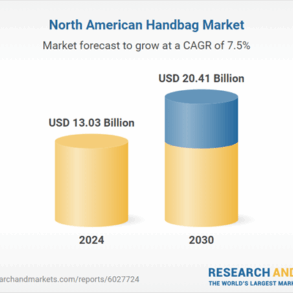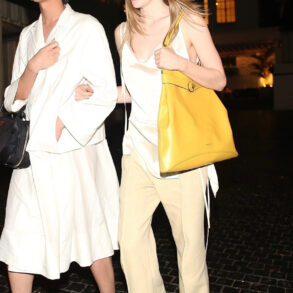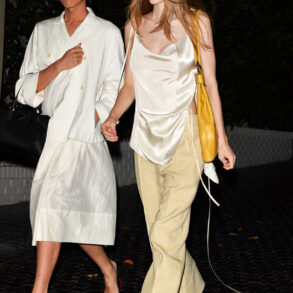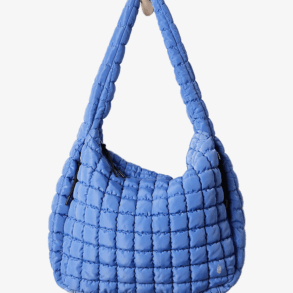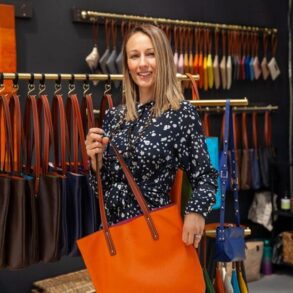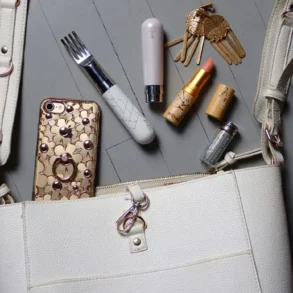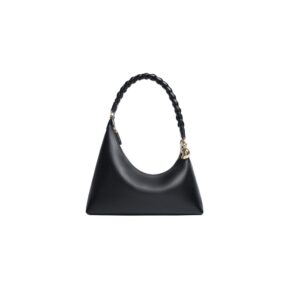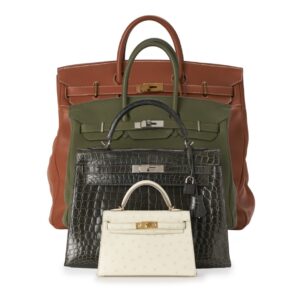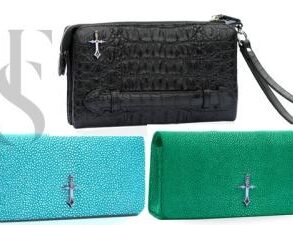Apr 30, 2025
IndexBox has just published a new report: Australia – Luggage And Handbags – Market Analysis, Forecast, Size, Trends and Insights.
The article discusses the increasing demand for luggage and handbags in Australia, projecting a positive trend in market consumption. Market performance is expected to slow down slightly, with a projected CAGR of +1.1% in volume and +7.3% in value from 2024 to 2035. By the end of 2035, the market is predicted to reach a volume of 57M units and a value of $906M.
Market Forecast
Driven by increasing demand for luggage and handbags in Australia, the market is expected to continue an upward consumption trend over the next decade. Market performance is forecast to decelerate, expanding with an anticipated CAGR of +1.1% for the period from 2024 to 2035, which is projected to bring the market volume to 57M units by the end of 2035.
In value terms, the market is forecast to increase with an anticipated CAGR of +7.3% for the period from 2024 to 2035, which is projected to bring the market value to $906M (in nominal wholesale prices) by the end of 2035.

Consumption
Australia’s Consumption of Luggage And Handbags
In 2024, consumption of luggage and handbags increased by 5.3% to 50M units, rising for the third year in a row after three years of decline. The total consumption volume increased at an average annual rate of +3.3% from 2013 to 2024; however, the trend pattern indicated some noticeable fluctuations being recorded throughout the analyzed period. Over the period under review, consumption hit record highs in 2024 and is likely to continue growth in the immediate term.
The value of the luggage market in Australia fell modestly to $416M in 2024, shrinking by -4.5% against the previous year. This figure reflects the total revenues of producers and importers (excluding logistics costs, retail marketing costs, and retailers’ margins, which will be included in the final consumer price). Overall, consumption saw a resilient expansion. Over the period under review, the market hit record highs at $436M in 2023, and then dropped in the following year.
Production
Australia’s Production of Luggage And Handbags
In 2021, production of luggage and handbags decreased by -63.3% to 2.1M units for the first time since 2017, thus ending a three-year rising trend. Overall, production saw a abrupt slump. The pace of growth was the most pronounced in 2015 with an increase of 167%. As a result, production attained the peak volume of 9.3M units. From 2016 to 2021, production growth remained at a somewhat lower figure.
In value terms, luggage production plummeted to $102M in 2021 estimated in export price. In general, production, however, posted a buoyant increase. The most prominent rate of growth was recorded in 2015 with an increase of 174%. Luggage production peaked at $281M in 2020, and then shrank dramatically in the following year.
Imports
Australia’s Imports of Luggage And Handbags
In 2024, supplies from abroad of luggage and handbags increased by 4.9% to 52M units, rising for the fourth consecutive year after two years of decline. In general, total imports indicated a moderate increase from 2013 to 2024: its volume increased at an average annual rate of +4.3% over the last eleven years. The trend pattern, however, indicated some noticeable fluctuations being recorded throughout the analyzed period. Based on 2024 figures, imports increased by +76.5% against 2020 indices. The most prominent rate of growth was recorded in 2022 with an increase of 46% against the previous year. Over the period under review, imports hit record highs in 2024 and are likely to see steady growth in the near future.
In value terms, luggage imports reduced to $808M in 2024. Overall, imports showed a remarkable increase. The pace of growth appeared the most rapid in 2022 with an increase of 39% against the previous year. As a result, imports reached the peak of $892M. From 2023 to 2024, the growth of imports remained at a somewhat lower figure.
Imports By Country
In 2024, China (41M units) constituted the largest supplier of luggage to Australia, accounting for a 80% share of total imports. Moreover, luggage imports from China exceeded the figures recorded by the second-largest supplier, India (6M units), sevenfold.
From 2013 to 2024, the average annual growth rate of volume from China amounted to +3.4%. The remaining supplying countries recorded the following average annual rates of imports growth: India (+17.9% per year) and Vietnam (+19.3% per year).
In value terms, China ($300M) constituted the largest supplier of luggage and handbags to Australia, comprising 37% of total imports. The second position in the ranking was taken by India ($32M), with a 4% share of total imports.
From 2013 to 2024, the average annual growth rate of value from China totaled +2.8%. The remaining supplying countries recorded the following average annual rates of imports growth: India (+11.8% per year) and Vietnam (+14.5% per year).
Imports By Type
Handbags with outer surface of plastic sheeting or of textile materials (21M units), cases and containers; trunks, suit-cases, vanity-cases, executive-cases, brief-cases, school satchels and similar containers, with outer surface of plastics or of textile materials (16M units) and travel sets; for personal toilet, sewing, shoe or clothes cleaning (7.5M units) were the main products of luggage imports to Australia, together comprising 86% of total imports. Handbags with outer surface of vulcanised fibre or of paperboard, handbags with outer surface of leather, composition leather, or patent leather, cases and containers; trunks, suit-cases, vanity-cases, executive-cases, brief-cases, school satchels and similar containers, with outer surface of vulcanised fibre or of paperboard and cases and containers; trunks, suit-cases, vanity-cases, executive-cases, brief-cases, school satchels and similar containers, with outer surface of leather, of composition leather or of patent leather lagged somewhat behind, together accounting for a further 14%.
From 2013 to 2024, the biggest increases were recorded for handbags with outer surface of vulcanised fibre or of paperboard (with a CAGR of +14.1%), while purchases for the other products experienced more modest paces of growth.
In value terms, luggage and handbags with the largest imports in Australia were handbags with outer surface of leather, composition leather, or patent leather ($361M), handbags with outer surface of plastic sheeting or of textile materials ($214M) and cases and containers; trunks, suit-cases, vanity-cases, executive-cases, brief-cases, school satchels and similar containers, with outer surface of plastics or of textile materials ($205M), together comprising 96% of total imports. Cases and containers; trunks, suit-cases, vanity-cases, executive-cases, brief-cases, school satchels and similar containers, with outer surface of leather, of composition leather or of patent leather, travel sets; for personal toilet, sewing, shoe or clothes cleaning, cases and containers; trunks, suit-cases, vanity-cases, executive-cases, brief-cases, school satchels and similar containers, with outer surface of vulcanised fibre or of paperboard and handbags with outer surface of vulcanised fibre or of paperboard lagged somewhat behind, together comprising a further 3.5%.
In terms of the main product categories, handbags with outer surface of vulcanised fibre or of paperboard, with a CAGR of +9.9%, recorded the highest rates of growth with regard to the value of imports, over the period under review, while purchases for the other products experienced more modest paces of growth.
Import Prices By Type
In 2024, the average luggage import price amounted to $16 per unit, waning by -9.7% against the previous year. Over the period from 2013 to 2024, it increased at an average annual rate of +2.0%. The most prominent rate of growth was recorded in 2015 when the average import price increased by 18%. Over the period under review, average import prices hit record highs at $20 per unit in 2021; however, from 2022 to 2024, import prices stood at a somewhat lower figure.
Prices varied noticeably by the product type; the product with the highest price was handbags with outer surface of leather, composition leather, or patent leather ($145 per unit), while the price for travel sets; for personal toilet, sewing, shoe or clothes cleaning ($1.2 per unit) was amongst the lowest.
From 2013 to 2024, the most notable rate of growth in terms of prices was attained by cases and containers; trunks, suit-cases, vanity-cases, executive-cases, brief-cases, school satchels and similar containers, with outer surface of leather, of composition leather or of patent leather (+11.2%), while the prices for the other products experienced more modest paces of growth.
Import Prices By Country
In 2024, the average luggage import price amounted to $16 per unit, with a decrease of -9.7% against the previous year. Over the last eleven-year period, it increased at an average annual rate of +2.0%. The pace of growth was the most pronounced in 2015 when the average import price increased by 18% against the previous year. The import price peaked at $20 per unit in 2021; however, from 2022 to 2024, import prices remained at a lower figure.
There were significant differences in the average prices amongst the major supplying countries. In 2024, amid the top importers, the country with the highest price was Vietnam ($18 per unit), while the price for India ($5.3 per unit) was amongst the lowest.
From 2013 to 2024, the most notable rate of growth in terms of prices was attained by China (-0.5%), while the prices for the other major suppliers experienced a decline.
Exports
Australia’s Exports of Luggage And Handbags
After three years of growth, shipments abroad of luggage and handbags decreased by -7.7% to 1.3M units in 2024. Overall, exports, however, continue to indicate a relatively flat trend pattern. The growth pace was the most rapid in 2022 when exports increased by 76%. The exports peaked at 1.6M units in 2018; however, from 2019 to 2024, the exports failed to regain momentum.
In value terms, luggage exports expanded to $57M in 2024. In general, exports, however, recorded a resilient expansion. The growth pace was the most rapid in 2020 with an increase of 45%. The exports peaked in 2024 and are likely to see steady growth in the near future.
Exports By Country
New Zealand (642K units) was the main destination for luggage exports from Australia, accounting for a 48% share of total exports. Moreover, luggage exports to New Zealand exceeded the volume sent to the second major destination, the United States (248K units), threefold. The third position in this ranking was held by Singapore (81K units), with a 6.1% share.
From 2013 to 2024, the average annual growth rate of volume to New Zealand stood at -1.2%. Exports to the other major destinations recorded the following average annual rates of exports growth: the United States (+1.0% per year) and Singapore (+14.6% per year).
In value terms, Singapore ($15M), New Zealand ($12M) and Hong Kong SAR ($7.1M) were the largest markets for luggage exported from Australia worldwide, together comprising 60% of total exports. The United States, the UK, Japan, China, Fiji, Papua New Guinea and Sierra Leone lagged somewhat behind, together comprising a further 19%.
Sierra Leone, with a CAGR of +72.3%, saw the highest rates of growth with regard to the value of exports, among the main countries of destination over the period under review, while shipments for the other leaders experienced more modest paces of growth.
Exports By Type
Handbags with outer surface of plastic sheeting or of textile materials (432K units), travel sets; for personal toilet, sewing, shoe or clothes cleaning (281K units) and cases and containers; trunks, suit-cases, vanity-cases, executive-cases, brief-cases, school satchels and similar containers, with outer surface of plastics or of textile materials (166K units) were the main products of luggage exports from Australia, with a combined 66% share of total exports. Handbags with outer surface of leather, composition leather, or patent leather, handbags with outer surface of vulcanised fibre or of paperboard, cases and containers; trunks, suit-cases, vanity-cases, executive-cases, brief-cases, school satchels and similar containers, with outer surface of vulcanised fibre or of paperboard and cases and containers; trunks, suit-cases, vanity-cases, executive-cases, brief-cases, school satchels and similar containers, with outer surface of leather, of composition leather or of patent leather lagged somewhat behind, together comprising a further 34%.
From 2013 to 2024, the biggest increases were recorded for handbags with outer surface of leather, composition leather, or patent leather (with a CAGR of +14.3%), while shipments for the other products experienced more modest paces of growth.
In value terms, luggage and handbags with the largest exports in Australia were handbags with outer surface of leather, composition leather, or patent leather ($25M), handbags with outer surface of plastic sheeting or of textile materials ($14M) and cases and containers; trunks, suit-cases, vanity-cases, executive-cases, brief-cases, school satchels and similar containers, with outer surface of plastics or of textile materials ($8.8M), with a combined 84% share of total exports.
Handbags with outer surface of leather, composition leather, or patent leather, with a CAGR of +17.0%, recorded the highest growth rate of the value of exports, among the main product categories over the period under review, while shipments for the other products experienced more modest paces of growth.
Export Prices By Type
The average luggage export price stood at $43 per unit in 2024, with an increase of 13% against the previous year. Overall, the export price recorded strong growth. The growth pace was the most rapid in 2019 an increase of 85% against the previous year. The export price peaked at $49 per unit in 2020; however, from 2021 to 2024, the export prices failed to regain momentum.
There were significant differences in the average prices for the major types of exported product. In 2024, the product with the highest price was handbags with outer surface of leather, composition leather, or patent leather ($178 per unit), while the average price for exports of travel sets; for personal toilet, sewing, shoe or clothes cleaning ($2.1 per unit) was amongst the lowest.
From 2013 to 2024, the most notable rate of growth in terms of prices was recorded for the following types: cases and containers; trunks, suit-cases, vanity-cases, executive-cases, brief-cases, school satchels and similar containers, with outer surface of plastics or of textile materials (+11.9%), while the prices for the other products experienced more modest paces of growth.
Export Prices By Country
In 2024, the average luggage export price amounted to $43 per unit, rising by 13% against the previous year. Over the period under review, the export price showed a resilient expansion. The most prominent rate of growth was recorded in 2019 when the average export price increased by 85%. The export price peaked at $49 per unit in 2020; however, from 2021 to 2024, the export prices failed to regain momentum.
There were significant differences in the average prices for the major overseas markets. In 2024, amid the top suppliers, the country with the highest price was Singapore ($185 per unit), while the average price for exports to Sierra Leone ($93 per thousand units) was amongst the lowest.
From 2013 to 2024, the most notable rate of growth in terms of prices was recorded for supplies to the United States (+16.5%), while the prices for the other major destinations experienced more modest paces of growth.
Source: IndexBox Market Intelligence Platform
This post was originally published on this site be sure to check out more of their content.






